J.B. Roy, the forgotten founder of Asia's first Ayurvedic college in Calcutta
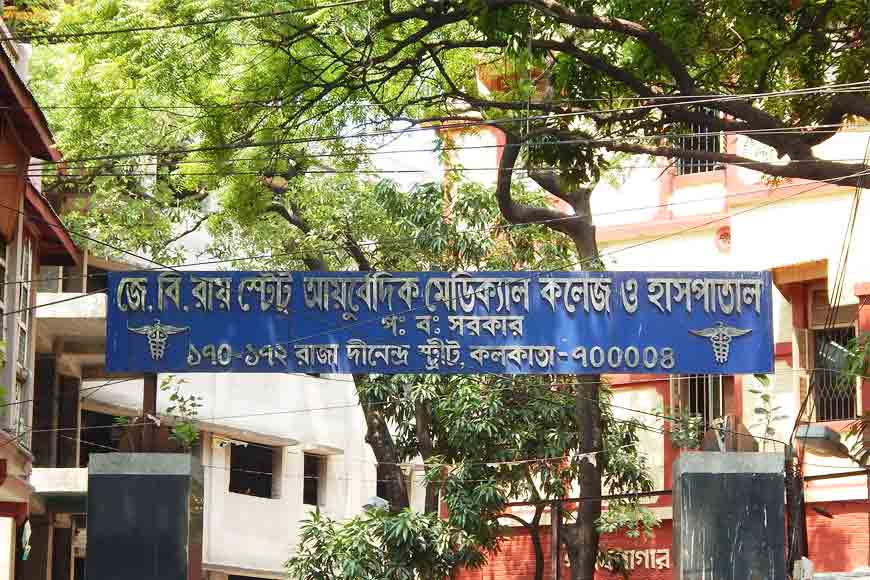
House number 29 on Fariapukur Street in North Kolkata lay in a derelict state for a long time. But people in the locality were suddenly taken by surprise when they noticed extensive repair work on the house started. The thick sturdy walls were whitewashed and given a makeover. Goods carrier vans lined up with furniture. There was a commotion in Fariapukur and people were curious to know what was happening at the site. Rumours were rife about an initiative to set up a medical college in the house. Most people dismissed the idea and some laughed and mocked the very concept. But putting all lingering doubts to rest, a medical college did come up and opened its doors within a very short time. Students started pouring in in large numbers, all keen to join the institution to train as physicians. A medical college opened and people saw there was a wing in the institution that started providing free medical treatment to the needy. The founder of the college, a distinguished physician himself, used to be present in the hospital every day and treat the poor.
Today, it may seem absurd to imagine a full-fledged medical college on Fariapukur Street but way back in 1916, 'Ashtanga Ayurveda College and Hospital' did come up and stood at the site, and the man behind the mission was Dr. Jamini Bhushan (J.B) Roy. It was the first Ayurvedic educational institution in India and the entire Asia. Today, of course, that educational institution is known as J.B. Roy State Ayurvedic Medical College. But what was the reason for setting up an alternative Ayurvedic hospital when the prestigious Calcutta Medical College and Hospital was already operational? Besides, who was Jamini Bhushan Roy?
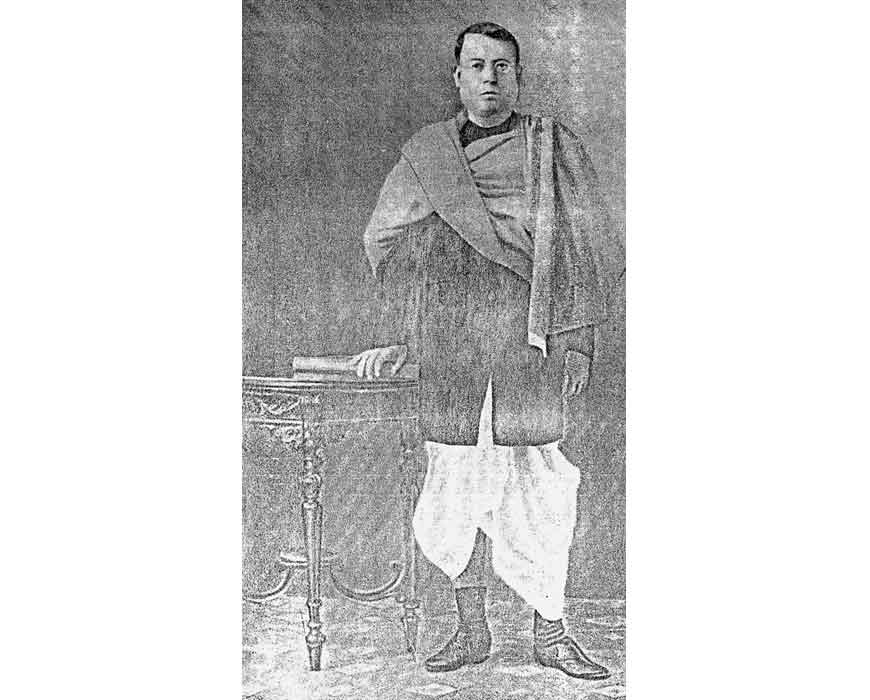 Kaviraj Jamini Bhushan Ray
Kaviraj Jamini Bhushan Ray
Born in 1879 to Kaviraj Panchanan Roy (Kavichintamoni) in Poyogram village in Khulna district of present-day Bangladesh. His father was a renowned poet of Khulna. Jamini Bhushan’s education began at the local village school. At an early age, he was sent to Calcutta to continue his education. At the age of 14, he completed his high school education at South Suburban School, Bhawanipore in South Calcutta. After high school, Jamini Bhushan enrolled himself for his Bachelor of Arts studies at Government Sanskrit College, Calcutta. After graduation, he simultaneously started pursuing his Master’s degree in Sanskrit language and also enrolled at Calcutta Medical College in 1902 for a medical degree. While still studying medicine he earned his Master's degree in Arts (M.A.) majoring in Sanskrit. Then in 1905, when he completed his Bachelor of Medicine (M.B.) and also M.R.A.S., he stood first in his class and was awarded a Gold Medal; the accompanying citation mentioned his high proficiency in "Gynaecology and Midwifery". His brilliant academic performance opened a world of professional opportunities and several British-run hospitals offered him lucrative positions to join as a medical practitioner, but by then, Jamini Bhushan had already decided to chart a new path.
Jamini Bhushan believed that Ayurvedic treatment can heal incurable diseases gradually. That's when he started formally learning Ayurveda from Kaviraj Mahamahopadhyay Bijoy Ratna Sen, the leading Ayurvedic physician of that era. In 1906, he embarked on his illustrious career when Bagala Marwari Hospital offered him the post of Kaviraj for a monthly salary of Rs 40/- only, a princely amount in those days.
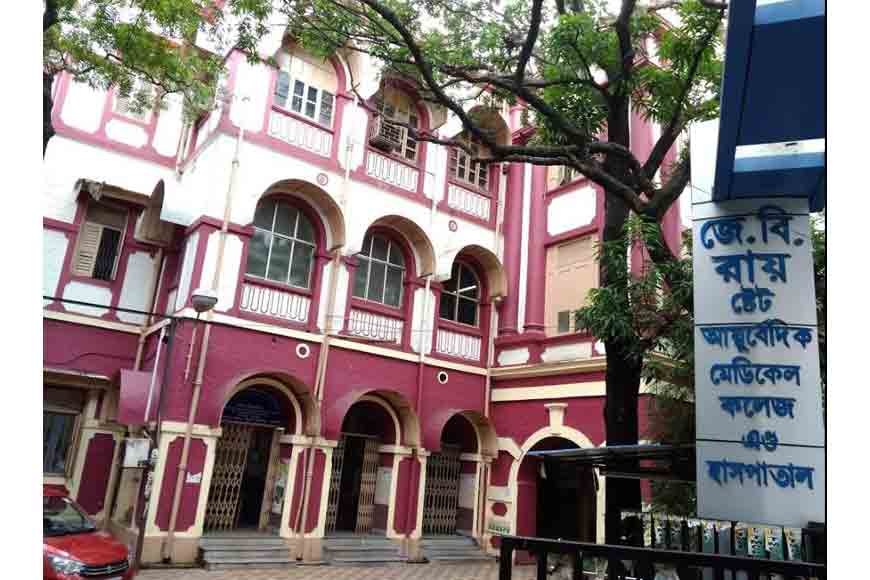
While he was studying at Calcutta Medical College, he was simultaneously learning Ayurveda – the ancient Indian medical science – from his father – a renowned practitioner of his time. As the magnificent world of Ayurveda revealed its myriad mysteries, Jamini Bhushan was mesmerized. Now he wanted to give up his career in Western medicine and pursue Ayurveda to become a full-fledged, trained Kaviraj or Vaidya (an Indian Ayurvedic doctor) like his father. The moment he made his decision public, his family members objected and he became the target of all jokes among his classmates. They would taunt him saying Ayurveda would ensure that he dies a pauper. But nothing could change Jamini Bhushan’s mind.
To the hoi polloi, his dogged perseverance seemed absurd but Jamini Bhushan studied both streams and concluded that the allopathy medical system that is prevalent in India came from the British but Ayurveda has been the universal form of treatment in our country since ancient times and is part of our rich heritage. He also observed that although allopathic treatment helps patients to bounce back and recover fast, it fails to control chronic diseases or pinpoint the real cause of the ailment and eradicate it from the roots.
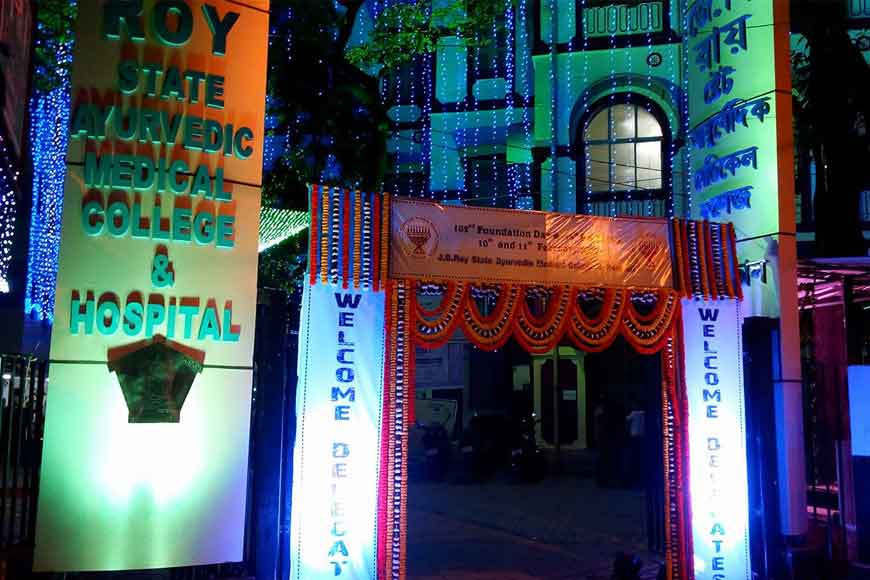
Jamini Bhushan believed that Ayurvedic treatment can heal incurable diseases gradually. That's when he started formally learning Ayurveda from Kaviraj Mahamahopadhyay Bijoy Ratna Sen, the leading Ayurvedic physician of that era. In 1906, he embarked on his illustrious career when Bagala Marwari Hospital offered him the post of Kaviraj for a monthly salary of Rs 40/- only, a princely amount in those days. In no time his fame spread all over the country. Jamini Bhushan was already a millionaire yet riches never lured him. Instead, he set up ‘Baidyaraj Pharmacy.’
He and his staff at the pharmacy made pioneering attempts to standardize Ayurvedic medicine following modern scientific methods. To raise awareness and fund his research – he increased his fees from Rupees 4 to Rupees 32, while treatment of poor people who couldn't afford his fees, was always free. Out-of-town trips to visit wealthy patients cost them Rupees 1,000 – which they gladly paid. He began receiving requests to attend to patients from the royal families of Baroda, Gwalior, and Kochi. The Nawabs allotted a hefty financial honorarium for Roy.
The premise of Jamini Bhushan's pharmacy was very small he wanted to do something on a mega scale. By 1915 he was sort of a celebrity in the field of Ayurvedic medicine, and that same year, he was elected President of the 7th All India Ayurvedic Conference in Madras (Chennai). During his visit to Madras, he was highly impressed with the functioning of and the amenities at Madras Ayurvedic College and decided he would establish a similar institution in Calcutta.
In 1916, at a rented house on 29 Fariapukur Street, he set up the Ashtanga Ayurveda College and Hospital. Dr Ray's practical idealism for amalgamating the ancient with the modern soon caught the attention of Mahatma Gandhi; and nine years later, on 6 May 1925, Gandhi laid the foundation stone for the institute's new building on Raja Dinendra Street – where the J. B. Roy State Ayurvedic Medical College and Hospital still stands. In 2016 the college celebrated its centenary.
Born in 1879 to Kaviraj Panchanan Roy (Kavichintamoni) in Poyogram village in Khulna district of present-day Bangladesh. His father was a renowned poet of Khulna. Jamini Bhushan’s education began at the local village school. At an early age, he was sent to Calcutta to continue his education. At the age of 14, he completed his high school education at South Suburban School, Bhawanipore in South Calcutta. After high school, Jamini Bhushan enrolled himself for his Bachelor of Arts studies at Government Sanskrit College, Calcutta. After graduation, he simultaneously started pursuing his Master’s degree in Sanskrit language and also enrolled at Calcutta Medical College in 1902 for a medical degree.
Later, he planned to build a separate medical institute for the treatment of tuberculosis, but all his plans came to an abrupt halt following his untimely death in 1926 at the age of 47. Just a day before his demise, he had donated Rs. 200,000 for the modernization of Ashtanga Ayurveda Vidyalaya. He had also donated all his movable and immovable properties for public welfare. Aside from contributing Rupees 70,000 of his own money for the construction of the new buildings, in his last will, Kaviraj Jamini Bhushan Ray bequeathed to his institution, large portions of immovable property that he owned at various places in India. Apart from the ayurvedic medical laboratory and museum he had built, he also donated a huge garden house located on 12 bighas of land in Patipukur. Later, Dr Bidhan Chandra Roy built a tuberculosis hospital in the same garden house which is known as Patipukur TB Hospital.
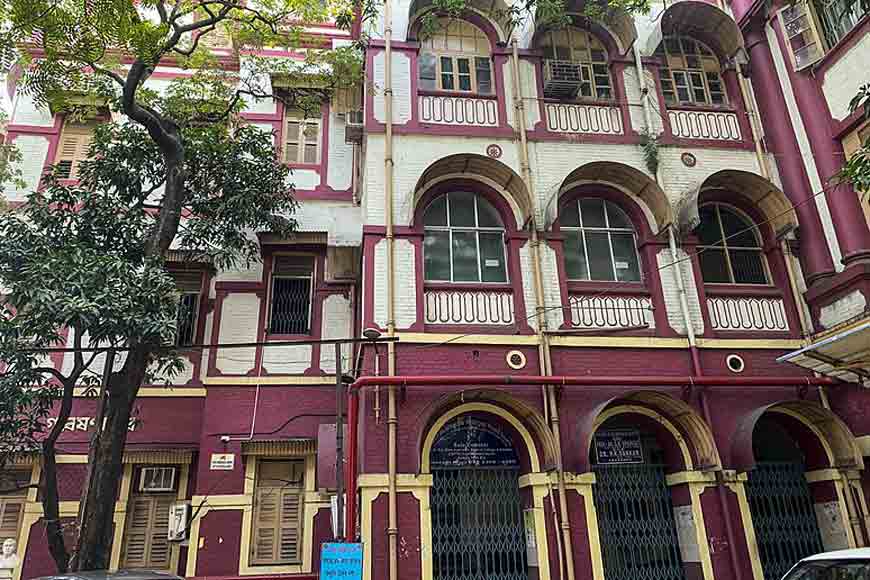
Kaviraj Jamini Bhushan Ray was married to Saroj Bala Devi and had six children. Like their father, his sons Bijoy Bhushan, Hari Bhushan and Kali Bhushan were brilliant students. However, the two younger sons died prematurely in their late teens.
Jamini Bhushan’s immense contribution to the sphere of medicine cannot be denied even to this day. Whether it is the diagnosis of children's disease or toxicology, his books remain invaluable for reference. He wrote several books on medical science including ‘Diseases – Their Origin and Diagnosis’, ‘A Treatise on Diseases of Ear, Nose, Throat and Mouth,’ ‘The Care of Infants and the Diseases of Children’ and ‘A Manual of Toxicology.’ Though titled in English – all these books were originally written in Sanskrit. These books are based on ancient Indian "Salakya Tantra" (Otolaryngology, or Ear, Nose, Throat), "Prashuti Tantra" (Gynecology), "Bisha Tantra" (Toxicology) and "Kumara Tantra" (Paediatrics). Particularly his book "Diseases – Their Origin and Diagnosis" brought him critical acclaim. He published a monthly journal in Bengali named "Ayurveda". Unfortunately, a brilliant physician and a great philanthropist of such stature as Dr. J.B. Roy have gradually faded from public memory.
However, the legendary Ayurveda Vaidya’s birthday is July 1, which happens to be Dr. Bidhan Chandra Roy’s birthday as well and is observed as National Doctor’s Day in India.










